The 1795 silver dollar value ranges from $2,000 to over $1 million depending on type, condition, and variety. Two designs exist: Flowing Hair ($3,000-$1.08M+) and Draped Bust ($2,000-$850K+). Key value factors include coin condition (circulated vs. Mint State), rare varieties like the 3 Leaves or Off-Center Bust, and special features such as silver plugs. Notable sales include a MS-66 3 Leaves Flowing Hair at $1,265,000 and an Off-Center Draped Bust at $1,057,500. Professional grading through PCGS or NGC is essential to determine accurate value and confirm authenticity, as condition differences create vast price variations.
The 1795 silver dollar represents a pivotal moment in American coinage history—the nation’s first full year producing its own dollar coins. If you’re holding one of these early American treasures, you might be sitting on anywhere from a few thousand dollars to over a million, depending on which design you have and its condition. Two distinct types emerged from the Philadelphia Mint in 1795: the Flowing Hair dollar and its successor, the Draped Bust dollar. Both command serious attention from collectors and investors alike.
Understanding the Flowing Hair Silver Dollar From 1795
The Flowing Hair design represents America’s inaugural silver dollar series, struck only in 1794 and 1795 before being replaced. Lady Liberty appears with flowing hair on the obverse, while a small eagle perches within a wreath on the reverse. The United States Mint produced approximately 160,295 Flowing Hair dollars in 1795, though far fewer survive today in collectible condition.
What makes these coins particularly intriguing is the variety within the 1795 mintage itself. Numismatists have identified several distinct variations based on the number of leaves appearing on the reverse olive branch and the presence or absence of a silver plug—a small piece of silver inserted into the planchet before striking to ensure the coin met proper weight specifications.
Value Range by Preservation Grade:
| Condition | Approximate Value |
|---|---|
| Good to Fine (circulated) | $3,000–$12,500 |
| Extremely Fine (XF-40 to XF-45) | $20,000–$70,000 |
| Mint State (MS-60 to MS-66) | $60,000–$1,080,000+ |
The variation in pricing within each grade reflects factors like strike quality, luster retention, and the specific leaf variety. A sharply struck example with original surfaces will command premiums over a weakly struck or cleaned specimen at the same numerical grade.
The Three Leaves Variety: A Seven-Figure Rarity
Among Flowing Hair dollars, the Three Leaves variety stands as the most coveted. Most 1795 examples display two leaves beneath each of the eagle’s wings on the reverse, but a small portion shows three leaves under one wing. This seemingly minor difference translates to substantial value differences at the highest grades.
Heritage Auctions sold a PCGS MS-66 example of the Three Leaves variety for $1,265,000 in a major numismatic event. Even at lower Mint State levels, these coins fetch impressive sums. GreatCollections auction records show an MS-62 specimen graded by PCGS brought $292,500 from competitive bidding.
The silver plug variation adds another layer of desirability and value. Mint workers occasionally inserted a small silver disk into underweight planchets before striking. These adjusted-weight coins are exceptionally rare today, with authenticated examples trading in the hundreds of thousands of dollars when they appear at auction. Detecting a genuine silver plug requires careful examination, as it appears as a slightly different texture or color on the coin’s surface, typically visible on both sides.
Draped Bust Dollar: The New Design of Late 1795
In October 1795, the Mint introduced the Draped Bust design, which would continue through 1803. Artist Gilbert Stuart’s drawing of a prominent Philadelphia socialite inspired the more refined portrait of Liberty. The reverse maintained the small eagle motif used on the Flowing Hair type.
Production of the 1795 Draped Bust dollar totaled approximately 42,738 pieces, making it considerably scarcer than its Flowing Hair counterpart in terms of original mintage. Two major die varieties exist, known by their Bolender-Breen numbers in numismatic references.
The Off-Center Bust variety (BB-51) shows Liberty’s portrait positioned noticeably to the left of where it appears on the Centered Bust type (BB-52). This off-center placement wasn’t an error but rather a characteristic of specific dies used during production. Stack’s Bowers Galleries handled a PCGS Specimen-66 example of the Off-Center Bust that realized $1,057,500, demonstrating the premium this variety commands.
Draped Bust Dollar Value Estimates:
| Condition | Approximate Value |
|---|---|
| Good to Fine (circulated) | $2,000–$8,000 |
| Extremely Fine (XF-40 to XF-45) | $12,000–$50,000 |
| Mint State (MS-60 to MS-65) | $60,000–$850,000+ |
The Centered Bust variety, while more common, still represents a significant numismatic prize. Circulated examples in Good to Very Fine condition appear at auction regularly, providing entry points for collectors working with five-figure budgets rather than six or seven.
Critical Authentication and Grading Considerations
Given that even heavily worn 1795 dollars start at several thousand dollars, and exceptional pieces eclipse a million, authentication becomes non-negotiable. Counterfeiters have targeted these early dollars for decades, producing deceptive fakes that can fool inexperienced collectors.
Professional grading through the Professional Coin Grading Service or Numismatic Guaranty Company provides essential protection. These third-party services authenticate coins, assign numerical grades on the Sheldon scale, and encapsulate them in tamper-evident holders. The grading fee—typically between $50 and $150 depending on service level and declared value—represents money well spent when dealing with coins worth thousands or more.
The difference between adjacent grades can mean tens of thousands of dollars. An About Uncirculated 55 (AU-55) Flowing Hair dollar might bring $35,000, while the same variety in MS-62 condition could reach $150,000. Grading services employ experienced numismatists who evaluate strike sharpness, surface preservation, luster quality, and eye appeal using consistent standards.
Beyond the base grade, services note important details like whether a coin has been cleaned, shows evidence of old repairs, or exhibits unusual characteristics. A “Details” grade indicates problems that prevent straight numerical grading, significantly impacting value. A coin marked “AU Details—Cleaned” might sell for half what an unimpaired AU example commands.
Determining Which Type You Have
Distinguishing between the Flowing Hair and Draped Bust types requires examining Liberty’s portrait on the obverse. The Flowing Hair design shows Liberty in profile facing right, with her hair streaming behind her and no drapery visible across her shoulder or chest. The Draped Bust type displays Liberty facing right with visible fabric draped across her bust and shoulder.
For Flowing Hair dollars, count the leaves beneath each eagle wing on the reverse. The Two Leaves variety shows two leaves under each wing, while the Three Leaves type has three leaves under the right wing. Examining the coin under magnification helps identify these small details accurately.
Identifying the silver plug variety requires looking for a circular area of slightly different appearance on the coin’s surface, usually near the center. The plug area may show different luster or a subtle color variation compared to surrounding metal. Not all surface variations indicate a genuine plug, however—consulting reference materials or submitting the coin for professional opinion prevents mistaken identification.
Where Serious Collectors Look for Maximum Return
Savvy collectors pursuing 1795 silver dollars focus on several strategies to maximize value when selling or optimize investment when buying. Major auction houses like Heritage Auctions, Stack’s Bowers Galleries, and Legend Rare Coin Auctions have established track records with early dollars, attracting serious bidders willing to pay strong prices for quality material.
Timing matters considerably in the rare coin market. Auction results for identical varieties in similar grades can vary by 20 percent or more depending on market conditions, the strength of the overall economy, and the presence of determined bidders targeting specific varieties to complete collections.
Provenance—the documented ownership history—adds value to exceptional pieces. Coins from famous collections like the Cardinal Collection or the Pogue Family Collection carry premiums because their histories have been researched and published. A 1795 dollar with a pedigree to a landmark 19th-century collection might bring 10 to 15 percent more than an identical coin lacking such documentation.
For those fortunate enough to own a 1795 silver dollar, securing proper insurance proves essential. Homeowners policies typically include limited coverage for coins, often capped at $1,000 to $2,000 total. Specialized collectibles insurance through providers familiar with numismatics offers agreed-value coverage that protects your investment at current market prices. Annual premiums typically run between 1 and 2 percent of the insured value, providing peace of mind for five-figure coins.
Making Your Next Move With Confidence
Whether you’ve inherited a 1795 silver dollar, discovered one in an old collection, or are considering purchasing one as an investment, your immediate priority should be professional authentication and grading if the coin hasn’t already been certified. Contact PCGS or NGC directly, or work through an authorized dealer who can submit coins on your behalf.
Research recent auction results for your specific variety and grade to establish realistic value expectations. The major auction houses maintain searchable archives showing prices realized for thousands of coins, giving you data-driven pricing guidance rather than relying on outdated catalog values.
If selling, consider consigning to a major auction rather than accepting an outright purchase offer from a dealer. Auction exposure to hundreds or thousands of potential buyers typically produces stronger results for rare, high-value material, even after accounting for the auction house commission of 10 to 20 percent. For coins valued under $10,000, however, direct dealer sales or online platforms may provide faster liquidity with comparable net proceeds.

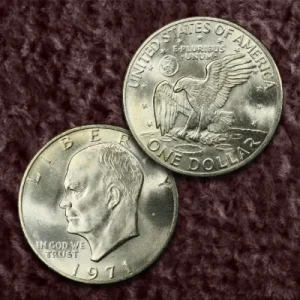
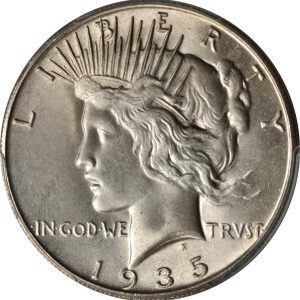
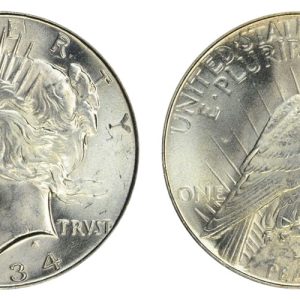
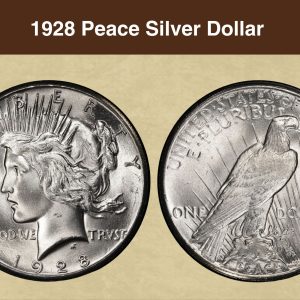
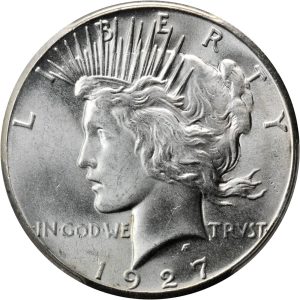
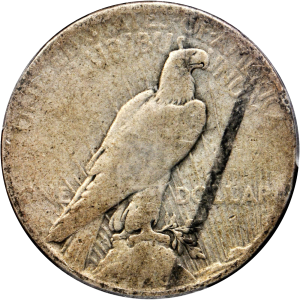
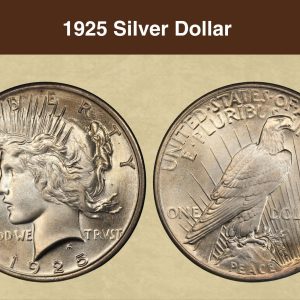
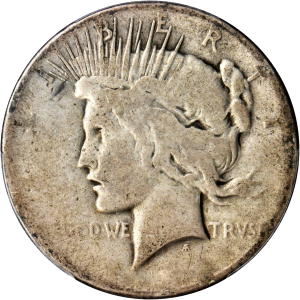
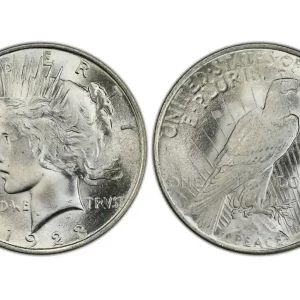
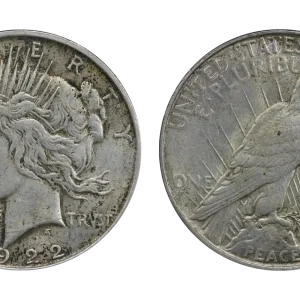
How much is a 1795 silver dollar worth today?
A 1795 silver dollar’s value varies significantly, from a few thousand dollars for a heavily circulated coin to over a million dollars for a pristine, uncirculated example, with the specific type (Flowing Hair or Draped Bust) and condition being the main factors. The rarity of the specific variety, which can be identified by features like the number of leaves on the eagle and details on the bust, also plays a crucial role.
How can I tell if my silver dollar is worth money?
To determine if your silver dollar is valuable, first check its date and mintmark for rarity, then assess its condition, and finally, identify the type of coin. You can find value estimates for specific coins by using online resources, consulting a professional coin dealer, or using a coin grading service like PCGS or NGC.
What was the dollar coin in 1795?
Flowing Hair dollar. The Flowing Hair dollar was the first dollar coin issued by the United States federal government. The coin was minted in 1794 and 1795; its size and weight were based on the Spanish dollar, which in turn was based on the tolar minted in Bohemia since 1520.
What is the 1795 George III coin?
1795 George III Gold Spade Guinea Coin. This iconic coin features the fifth laureate portrait of King George III on the obverse, with the reverse showiong the crowned spade shaped shield of arms, earning it the title of “spade guinea”.